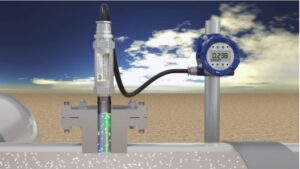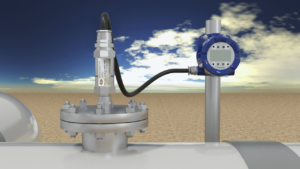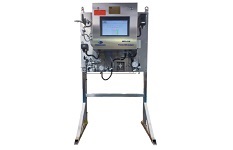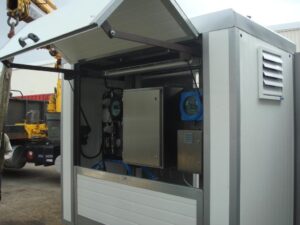Petrochemicals
An ethylene cracker relies heavily on a very wide range of on-line gas composition measurements to ensure safe and efficient operation, and a typical ethylene plant would have a large complement of gas analyzers and sampling systems.
Ethylene is probably the most important chemical feedstock derived from natural sources (crude oil, natural gas). It is manufactured globally
 and extensively used in a wide range of “down-stream” chemical processes to produce commodities ranging from plastics to synthetic rubber, paints, anti-freeze, detergents and solvents. A typical applications in ethylene production are monitoring the stream chemical composition of feedstock, intermediate products and final products, measurement the concentration of carbon dioxide, hydrogen and carbon monoxide in thermal cracking process and de-coke cycle.
and extensively used in a wide range of “down-stream” chemical processes to produce commodities ranging from plastics to synthetic rubber, paints, anti-freeze, detergents and solvents. A typical applications in ethylene production are monitoring the stream chemical composition of feedstock, intermediate products and final products, measurement the concentration of carbon dioxide, hydrogen and carbon monoxide in thermal cracking process and de-coke cycle.
 The electrical classification and safety of analyzer shelters, process instrumentation and interface equipment is a subject of great importance, since the most of petrochemical process locations has been determined as a hazardous area. The choice of proper equipment and protection methods initially involves determination of the nature of the hazards at the location. Modcon applies all available methods of protection, such as intrinsic safe, flameproof, pressurization, encapsulation, increased safety, powder filling, oil immersion, etc.
The electrical classification and safety of analyzer shelters, process instrumentation and interface equipment is a subject of great importance, since the most of petrochemical process locations has been determined as a hazardous area. The choice of proper equipment and protection methods initially involves determination of the nature of the hazards at the location. Modcon applies all available methods of protection, such as intrinsic safe, flameproof, pressurization, encapsulation, increased safety, powder filling, oil immersion, etc.
Modcon provides complete integrated analyzer systems for petrochemical industries, based on process gas chromatographs, spectro-photometers, thermal conductivity analyzers, mass-spectrometers, etc. The Systems are normally supplied installed in special analyzer houses with air-conditioning, power distribution, lighting, termination and junction boxes, gas and flame detection, relevant piping and wiring, process sample probes and sample conditioning, stream selection facilities, telephone modem connections, furniture, special equipment and tools, etc.
Beacon-3000 Naphtha process analyzer performs the full PIONA (C4 – C8) and Distillation points analysis of Naphtha. The field units are located at the Naphtha discharge pumps (10-15 bar) and continuously returns the sampled Naphtha to the suction pumps. The Field Unit is connected to the Main Analyzer that is situated in the general purpose equipment room, up to 3000 meters away, via telecommunications fiber optics cable. The Beacon Main Analyzer is connected through a Modbus interface to the main control room.
MOD-1022 Olefins Gas Analyzer is a real-time hydrocarbon gas analyzer based on Tunable Filter Spectroscopy (TFS)
platform. Calibrated for multi-component C1 – C5 of alkane and alkene gas streams, this package is an alternative
replacement of gas chromatographs, and it offers analysis in seconds and no carrier gas requirement.









